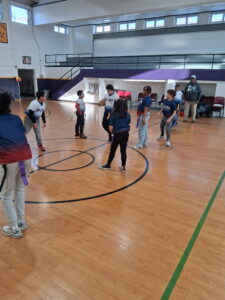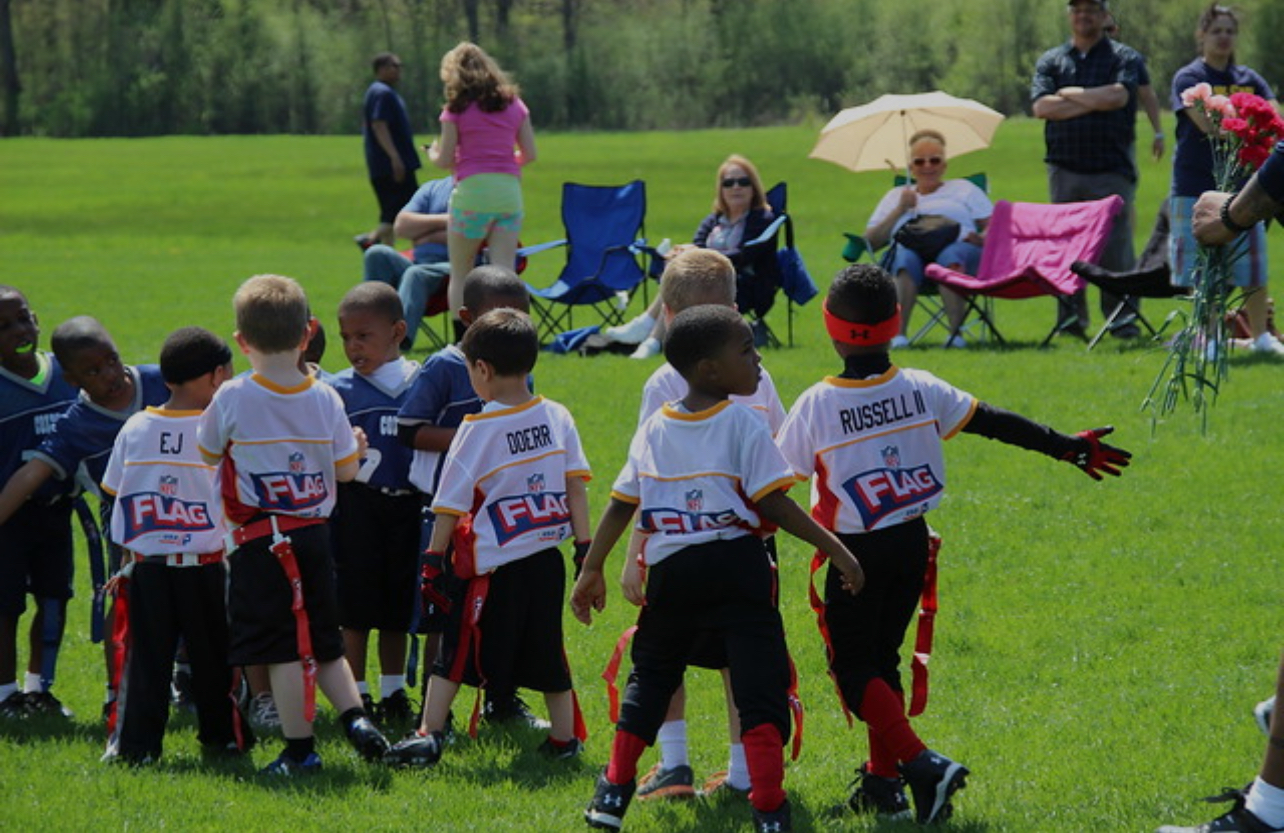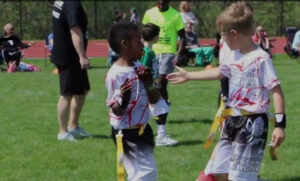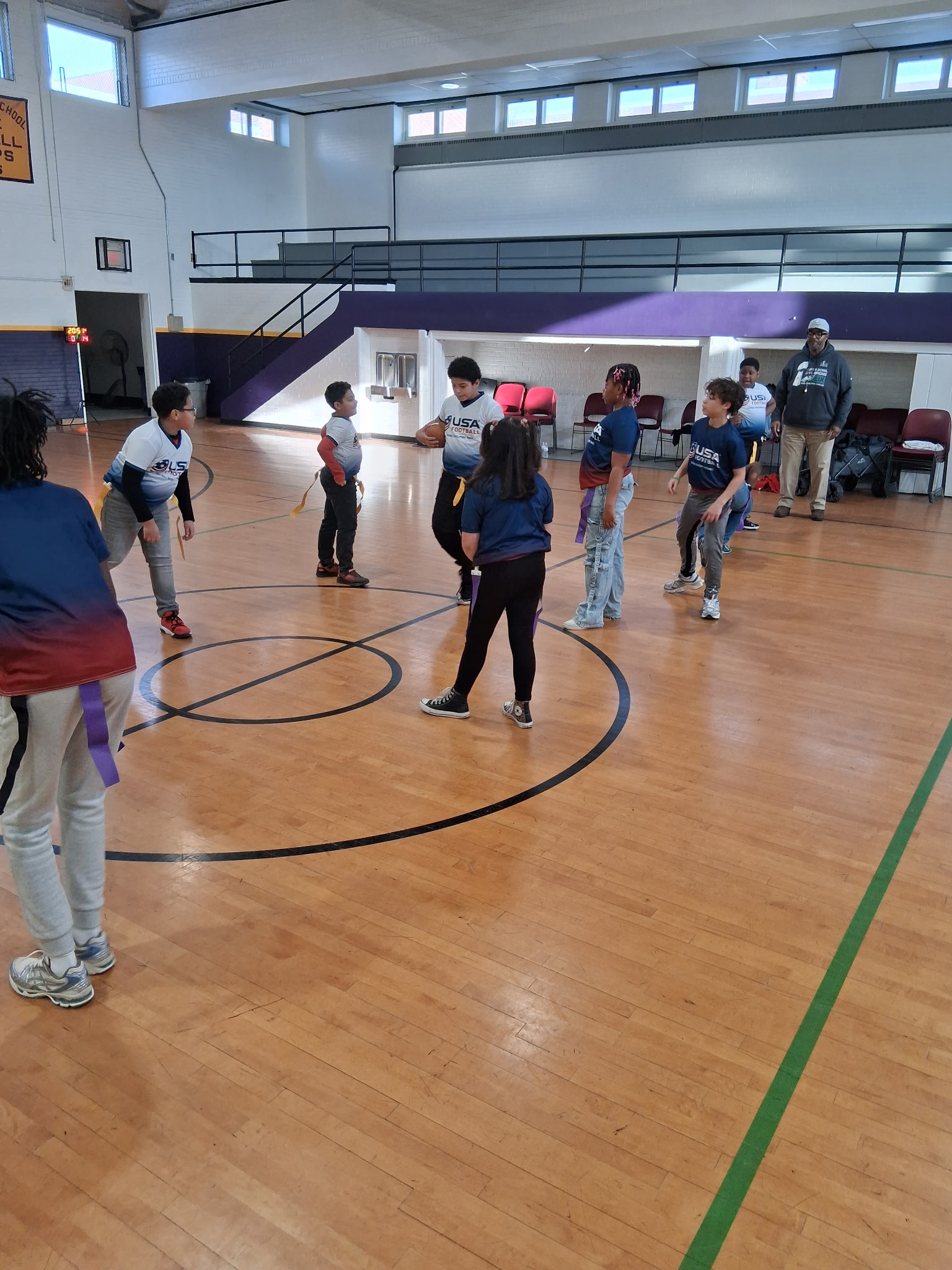Introduction
Welcome to “The Future Stars of Flag Football,” your go-to resource for everything related to youth flag football. Our mission is to foster skill development, sportsmanship, and a love for the game among young athletes.
1. Getting Started with Flag Football
Overview of Flag Football Rules
A. General Overview
- Team Composition: Typically played with 5 to 8 players per team.
- Field Dimensions: Usually 60 yards long and 30 yards wide with end zones of 10 yards.
- Game Duration: Games generally consist of two halves, each lasting 20-25 minutes with a running clock, stopping only for timeouts or injuries.
Starting Play
- Kickoff: The game starts with a kickoff from a designated spot. Teams can opt for a kick or a pass.
Scoring
- Touchdown: 6 points for reaching the opponent’s end zone.
- Extra Point: 1 point for a conversion attempt from the 5-yard line, or 2 points from the 10-yard line.
- Safety: 2 points awarded for tackling the ball carrier in their own end zone.
Gameplay
- Downs: Teams have four downs to advance the ball 10 yards.
- Passing: One forward pass is allowed per play; lateral passes are permitted.
- Rushing: The defense may rush the quarterback after a specific count (often 5 seconds).
- Flag Pulling: To stop a player, defenders must pull a flag from their waist instead of tackling.
Out of Bounds
Players are considered out of bounds if they or the ball crosses the boundary lines.
Penalties
Common penalties include:
- Offside: Defense crossing the line of scrimmage early.
- Holding: Grabbing the flag or interfering with a player’s movement.
- Personal Fouls: Aggressive contact, unsportsmanlike conduct.
Overtime
If the game is tied, it may go to overtime, wherein each team has a chance to score. A coin toss typically decides the first possession.
Timeouts
Teams usually have a limited number of timeouts during the game, often one per half.
Officials
– Games may have referees to enforce rules and maintain game order.
These rules may vary by league, so it’s advisable to check specific regulations before playing.

B. Equipment Needed (Flags, Jerseys, Cleats, Etc) For flag football, the following equipment is typically necessary:
1. Flags: Multi-colored flag belts that players wear to have their flags attached; each player has two flags.
2. Football: A regulation-sized football appropriate for the age group or skill level of the players.
3. Field Markings: Cones or markers to outline the playing field, end zones, and first-down markers.
4. Cleats: Sports shoes with good traction, preferably molded cleats designed for turf or grass surfaces.
5. Uniforms: Matching jerseys or shirts to distinguish teams; optional but can enhance team identity.
6. Shorts/Pants: Comfortable athletic shorts or pants that do not impede movement or hiding flags.
7. Mouthguards: Recommended for player safety, particularly for youth leagues.
8. Water Bottles: For hydration during the game.
9. Referee Gear: Whistles, flags, and any other items needed for officials to regulate the game.
Optional equipment may include:
– Goal Posts: If the game format involves kicking extra points or field goals.
– Scoreboard: For tracking game progress and scores. Ensure compliance with league-specific regulations for additional requirements.

C. Finding Local Leagues and Teams To find local leagues and teams for flag football, follow these steps:
1. Online Search: Use search engines with keywords like “flag football leagues near me” or “flag football teams [your location].”
2. Social Media: Search platforms like Facebook, Instagram, or Twitter for local community pages or groups dedicated to flag football. You can join these groups to ask about teams and leagues.
3. Local Community Centers: Visit or call community centers, parks, or recreation departments in your area. They often have information on adult and youth sports leagues.
4. Sports Clubs and Organizations: Check websites of local sports clubs or organizations, such as the YMCA or local gymnasiums. They often organize flag football events.
5. Apps and Websites: Utilize sports league directories like:
– Meetup.com: For informal gatherings and teams.
– LeagueApps: For organized sports leagues.
– JustPlay: For finding local recreational leagues.
6. Local Schools and Universities: Contact local high schools and universities that may have flag football leagues or intramural sports programs.
7. Word of Mouth: Ask friends, family, or colleagues if they know of any flag football teams or leagues in your area.
8. Youth Sports Organizations: Check with organizations like WCFL Flag @ ErikWilliamsFoundation.Org, USA Football @USAfootball.com or local youth sports associations, which may have flag football programs.
9. Meet Local Coaches: Attend community sports events to meet coaches and players who can provide information.
10. Sports Equipment Stores: Visit local sports shops; staff may have knowledge of local leagues and teams.
By following these steps, you can identify opportunities to join flag football leagues and teams in your area.




